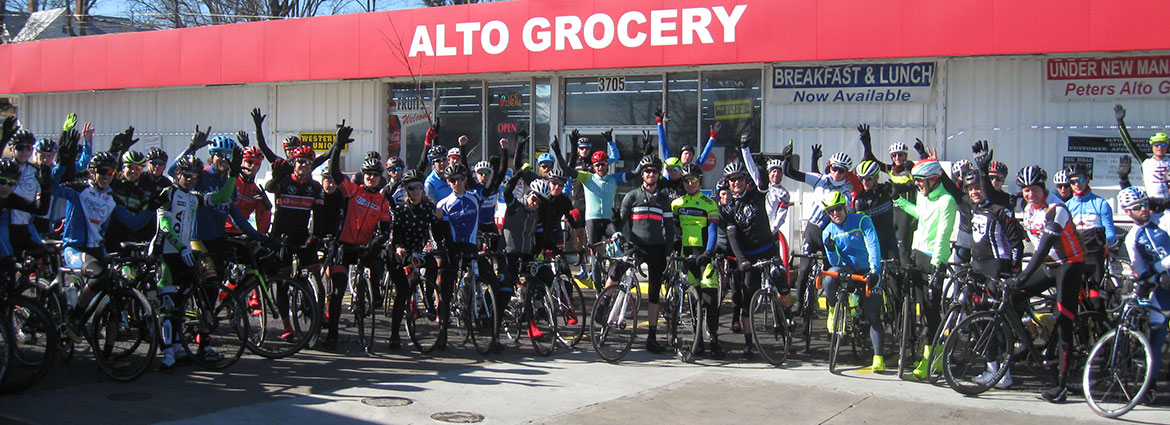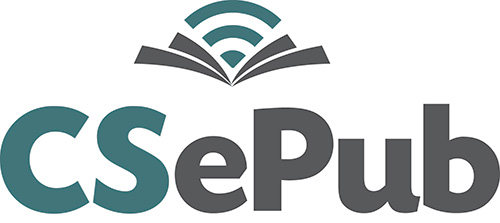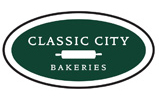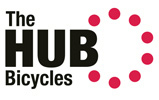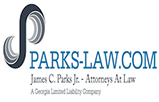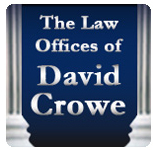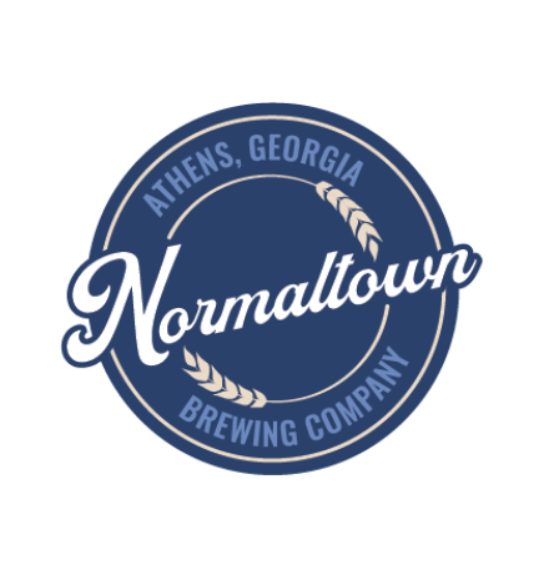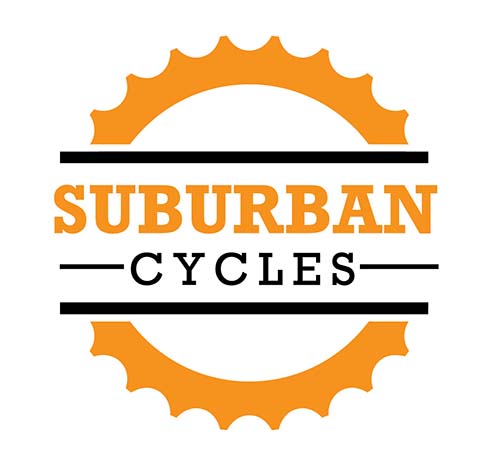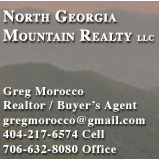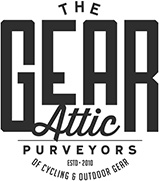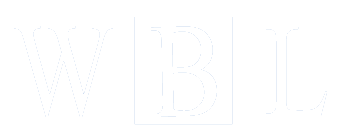New York City
The Humble Chronicler: New York City
My Manhattan
The experience of visiting New York City for me, a born and bred Southerner, has been similar to sending electric charges through my body in waves—it’s been pleasurable. My 3 visits to the City since 9/11 have been a feast for my senses. New York City is slices of the entire world pressed into one 22 square mile spot. It is the greatest place on earth to experience firsthand the various extant cultures around the world. It is a chance to note our differences. It is a better one to observe our similarities.
Walking Manhattan offers the most bang for a buck. The sights, the sounds, the smells, the food and the people on this island can’t be fully absorbed or appreciated from behind the glass of a cab or on the roof of a bus. A ride on the subway, though, is a must for all visitors. Then again, a death defying rocket ride in the backseat of a cab may be also.
Everywhere on Manhattan tall buildings line the streets and plunge skyward in endless rows. The streets stream with people, but the density is not unbearable, even for someone used to open spaces. My perambulations around the City weren’t usually hindered by a mob of people. Sometimes, it was crowded at a corner, but people walk quickly here, they sprint at times. Buses, trucks and cars constantly grumble, grind, hack, honk, screech and squeal. Smoke literally gets in your eyes. Yellow cabs are everywhere. So is a Starbucks. Lots of people smoke. This is a city of smokers. This is a city of cell phones.
A street vendor’s stand is always close by sending out smoke signals with scents of sizzling kebobs, spiced lamb, roasted nuts or hot dogs. Newspaper stands—bookstores crammed into a closet—are open on most corners. Tables piled high with fruit—apples, oranges, plums, raspberries, bananas, limes—line the streets. Bike messengers in black battle gear with their packs slung over their shoulders weave in and out of cars in brilliant displays of cycling prowess. Something is constantly moving—this City is never still.
A symphony of languages from around the globe is spoken on the streets—Spanish, Italian, French, German, Polish, Chinese, Japanese, Taiwanese, Vietnamese, Egyptian, Indian, Russian, Danish and Portuguese. Many of the 6000 languages presently spoken can be heard somewhere in the City. Every skin tone, all cultures, and all beliefs are blended together in this New York City stew. Large ethnic groups have coagulated and formed enclaves within the City, but these neighborhoods seem to bleed into one another. The only place a visitor can find solid lines of demarcation between the neighborhoods are on the maps. The only physical barrier down in the streets is an old wall on a street named in its honor, Wall Street.
No area this small has ever experienced the diverse conflation of cultures, ethnicities and beliefs that are presently converging in New York. After our remote forebears ventured out of North Africa fifty thousand years ago, people and their cultures existed and evolved in isolation over the course of tens of thousands of years. As a result of the isolation, our physical features—skin tones, shapes, sizes—diverged, sometimes sharply. Our cultures developed along different routes like runnels of water separating and winding their way down a hill. The same phenomenon occurred with language. At first, we were clicking our tongues, now we have French.
The explosive efflorescence of modern day Manhattan has taken place in the last two hundred years. Manhattan is a living archaeological record of the insatiable drive and creative spirit of the human species. I’m sure the Big Bang was breathtaking to behold, but when I fly into LaGuardia, the skyline of Manhattan leaves my jaw hanging open like its hinges are broke.
New York City hasn’t always attracted me. As a young kid growing up in Athens, Georgia during the 60’s and 70’s, New York might as well have been the moon as far as I was concerned—both were remote venues well beyond my reach. My own meager kingdom only extended as far as my banana seat bicycle would carry me, which was still many miles farther out than my mother ever realized.
My perception of New York City in my youth was framed by the movies I saw at the local theatre. My father was a forward thinking Southerner—he took me to R rated movies. Though I’m certain I saw many movies set in New York, only a handful stand out. We went to see The French Connection and Shaft in 1971 when I was 9 years old. Both movies are set in the City. I assured him beforehand, mano a mano, that I could handle both the sex and the violence. I also swore not to tell my mother. The next year, having proven that I was a man of my word, he escorted me inside the theatre to see The Godfather. He left—he had already seen it. I made the mistake of leaving the theatre at intermission; I thought the movie was over. My father was sympathetic to my plight. He took me back, took me in the theatre, and left again. This time, I never left my seat.
Without knowing it, a certain notion of the City imprinted itself on my wee little brain. It wasn’t a positive image. New York City was a way station on a train to Hell: the streets were grimy, it was always bitter cold, the burned out buildings were brimming with junkies, and the mafia shot people in the head and drowned them in the bottom of rivers on a regular basis. Seeing Taxi Driver in ’76 and The Warriors in ’79 only provided more provender for my blinkered vision of the City.
Eventually I was startled to learn that many people were pulled towards New York City and not repulsed by it. I learned that New York City was at the heart of the literary universe. The publishers, the agents, the struggling writers and the icons were all there. I didn’t understand all the reasons why New York was the epicenter of the written word, but felt it must be related to a tradition of suffering. From Melville and Poe to Zuckerman and Percy, many of the greats have suffered in New York.
In the early 80’s, the bands that made the first footprints on the burgeoning Athens music scene—The B 52’s, REM and Pylon—spoke with affection when describing their own experiences in the New York club scene. These bands were on the cutting edge of cool, and they were singing the City’s praises. I learned that the United Nations, the place where the most important leaders in the universe confabulated, was headquartered in the Big Apple. New York City was constantly the backdrop to important news events. Like the knife-wielding Glenn Close, she refused to be ignored.
During the last decade of the last millennium, I dotted my map of the U.S. racing bicycles, but I never made it to New York City. Maybe it was because I couldn’t shake the claw marks those early movies had made on my tabula rasa. When September 11, 2001 arrived and ultimately passed, for the first time in my life, I saw the people of the City from a different angle—they looked vulnerable. When the dust from the Twin Towers finally settled and the bodies were pulled from beneath the wreckage, my wife and I, still residents of Athens, Georgia (pop. 130,000), parents to 3 small girls, decided it was time to go. We’ve been three times since. My experiences in the City, specifically Manhattan, and the impressions I am left with, are not what I expected. I’ve often wondered if this is a common phenomenon.
Chinatown is a striking example of a culture that has transplanted itself from elsewhere in the world to this island. Standing in the center of this oriental neighborhood, it is easy to imagine I am standing in the middle of Beijing. Storefronts are identified by Chinese script hanging vertically from the sides of buildings. The shops are bursting at the seams. Sundry dry goods and clothes appear to be overflowing out the front door of stores and shops and onto the sidewalk. Red, yellow, brown and green spices, dried herbs, and odd shaped roots are sold in various Tupperware containers on tables set up in front of many shops. Wizened little Chinese women scoop the ingredients into plastic bags, exchange greetings in their native tongue with the owner, drop some coins into the purveyor’s hand, and scuttle away—an ancient transaction imbued with mystery. On a side street, the back door of a refrigerated truck swings open and I see a dozen skinned little pigs hanging by their feet like bunches of bananas. My wife stands wide-eyed. They are delivered into various nearby restaurants. In the South, this is not the way pork arrives at the barbeque restaurants. A narrow side road, Eldridge Street, has small noodle houses featuring the best noodles and dumplings I have ever slurped down. I couldn’t read the menu, but I could point to a picture of food and smile in blissful ignorance. One cook used his tongs to lift a heavy coil of steaming noodles from boiling water. They were as long as snakes. He held them chest high and smiled while I took his photo.
Canal Street is the main thoroughfare through Chinatown. Tourists descend onto Canal Street in droves to buy the knockoff goods offered—watches, purses and clothes. My wife promised to buy purses and wallets for a small army of friends, so we took the plunge into the sea of people on Canal. The imitation goods aren’t sold in plain view on the streets any longer as they were during our first visit. Instead, a spotter on the street showed my wife a laminated card with photos of various purses and wallets that were available. After a nod that signaled we were interested, we were lead to the front of a building and handed over to an attractive, diminutive Chinese lady holding a hand held radio. She scanned us quickly from toe to head, then rattled off a bit of local lingo—Mandarin—into the radio. She lead us into the building through a side door, down a narrow corridor of stairs lighted only by a swinging 100 watt bulb at the bottom, around a tight 180 degree turn, and back into the mazy catacombs of a dimly lit basement. My wife squeezed my arm. Our little tour guide was hauling ass. The thought occurred to me that if we were bumped off down here, no one would ever find us. We rounded a corner and there she was in a brightly lit room with pink, red, purple, brown, yellow and blue purses lining the walls. The wallets were laid out in rows on tables. My wife left with a couple of large bags bulging with purses. Both women were smiling, the universal sign of happiness.
New York City police officers are like the rusty water towers that sit atop the older buildings of Manhattan, they’re everywhere. New York cops are a visible presence in this bustling City. At first, I was hesitant to approach a cop and ask directions; they’ve got better things to do. But it’s easy to walk out of one neighborhood and into another without realizing it. It’s easy to lose your way, so finally, I let go of my fears and rolled the dice. “Am I in Midtown?” I asked 2 cops standing on the corner. “No, you’re in Hell’s Kitchen.” They smiled, but that may have been because of my southern accent. They steered me in the right direction. Not once have I ever been greeted with ingratitude or a discourteous retort by an officer. Police officers routinely answered my questions like gracious tour guides. I was floored. I thought New York City cops were rude and obnoxious, like Popeye Doyle. I was wrong. They’re more like Shaft.
Sometimes the noise and the vibrations from a subway train would unexpectedly thunder up through me when I walked over a metal grate in the sidewalk. Once, while I was standing on top of a grate enjoying the sensation, I decided to follow the mass of humans that dove down into the hole in the ground—a portal to the subway system of New York. I bought a ticket from a gruff lady inside a glass booth at the bottom of the stairs. She never looked up from the book she was reading. I didn’t say much, so she didn’t know I was a tourist. I took my pass and walked to the turnstile. This was a rite of passage, and I wanted to blend in as if I was a habitué of the New York subway system. I swiped my pass through a slot, like a credit card swipe at the grocery store, but the turnstile didn’t give and the gate wouldn’t open. I kept swiping, but nothing. I had showed my hand: Tourist! Suddenly over the intercom: “Sir, you’re not from around here are you?” I turned around. It was the lady in the booth. She leaned into the microphone and said, “Swipe it like this.” She slid her arm back and fort in the air. Another man dressed in an army jacket came up behind me and said, “Like this.” He slid his card through gracefully, and pushed through the gate. I mimicked the man’s movements and slid my card through. The arm finally gave way. I turned around and the lady in the booth gave me a thumb’s up and smiled. I smiled back: connection.
I took the F train to Brooklyn. Upon returning, I exited at 34th Street. When I stepped out of my car, I noticed that a large crowd of over 100 people had gathered in a semi circle against a wall. This didn’t look good—was someone being mugged, or murdered? Those old fears were scratching on my chalkboard. But music was thumping and four young black guys and two young Puerto Ricans, all ranging in ages from 9 to 16, were putting on a show. They weren’t just dancing, they were doing acrobatics. One at a time, each of them would step forward and jump and spin and twirl with a street elegance and cocksure attitude befitting Baryshnikov. These guys could stand on two hands, then pick one hand off the ground, and spin around in time to the music with their feet dancing in the air. I was awestruck. The crowd was cheering. The leader of the group, the 16 year old, had the good timing of a Pentecostal preacher at a tent revival—he passed 3 buckets around when the crowd was at a fever pitch. It worked—I tossed in a ten spot. These kids had earned it. I felt flush.
On another fine but blustery day during my peregrinations around the Big Apple, I was yammering away on my cell phone to my wife who was 30 blocks away to my north. I was somewhere near the Garment District, I think. I didn’t realize it, but I was standing in front of a barber shop advertising haircuts for African American men. Two of the barbers, young guys around 25 or 30, were standing out front. “Hey man, where are you from?” one asked after I pocketed my phone. “Athens, Georgia,” I said. “Well, you need a New York City haircut. Come on in.” I was wearing a Jon Deere stocking cap. I pulled it off and pointed at my head. My hair was already short. “Well, it needs some work,” one of them said, frowning. “Look at yourself.” I looked in the glass. He was right. “Don’t worry,” he said, “I can work miracles.” I hoped he was right.
He combed with one hand and clipped with the other. He was fluid with quick movements of his hands. He had done this before. At home, I’m shorn clean with clippers. It’s quick, easy and efficient. Combing and clipping with scissors is an act of love, not for me, but for my hair. Combing and clipping takes much longer. My barber was an artist. I was sitting in 1 of 6 chairs. The chairs were all full, one with a quiet 4 year old boy as his father looked on. Rap music with a funky vibe and a heavy bass played from the speakers, and all the barbers cut hair while they bobbed and swayed with the music. Like barbers everywhere, they were also philosophers: “Man, people are the same everywhere, you know?” And another: “This City has everything. How do you like it?” I blurted out, “Man, I love it.” I surprised myself. I felt flush again.
Though I try and espouse egalitarian principles, walking into the great hall that is the Metropolitan Opera House in the Lincoln Center and seeing its majesty for the first time is enough to convert a Communist. I felt weak in the knees and short of breath. I remember stepping into a sea of plush red and lines of bright gold. I went to the Met to see Don Giovanni, Mozart’s gift to mortals. Unbeknownst to me, my wife had negotiated for front row seats. I’ve never done heroin, but I’ve read Ginsberg and Burroughs, and the rush I experienced while listening to the Don wail away about his life as a libertine sounded similar. I was swept away down the river. I lip-synched along with the Don. The conductor was standing on a ladder down in the well and his head was only 4 feet from me. I could have tapped him on the shoulder. I could here him grunting and I could see the spray fly from his lips as he flailed his arms like windmills. He was putting himself into the music. When the opera ended, I was so overcome with culture, I sprang to my feet and howled, “Yeehaw!” in my best rebel yell. Thank God the choruses of “Bravo!” raining down from the rafters drowned out my linguistic faux pas. I do believe the Don noticed my enthusiasm. He looked straight at me, smiled and bowed. If I’d had a rose, I would have tossed it to him.
Central Park is similar to Wonderland—it appears in the most unusual place. In a city where space is at a premium, where every inch of space in all three dimensions is utilized, a lush, pristine park spreads itself out. Central Park is huge, much bigger than I realized. It spans 3 miles, which didn’t sound like a long way, until I walked it. Central Park might actually qualify as a national forest. There are hardwood trees and lakes and fields and woods and an ice skating rink and animals and museums and walking paths. Horse drawn carriages are lined up at the south end of the Park. When the unmistakable smell of the horses wafted into my nostrils from half a mile away, it reminded me of home. The quiet of the park is what struck me. My wife and I found ourselves whispering at times, like we were in church. The din of the City could not be seen or heard. I could hear birds chirping. I realized it was the first time I had heard birds singing anywhere in the City. I heard the whir of bicycles, the sawing swoosh of roller blades, and the clop of runners as they passed. The highlight of Central Park was watching my 3 young daughters holding hands and ice skating in the rink with about 100 other people. I wondered how many countries and cultures and beliefs were out on the ice skating rink at that particular time. Most were wearing the same semiotic symbol that is the universal sign of happiness—a smile.
Despite my predilection for hoofing it around Manhattan on foot, my wife and I always ride in a cab at some points during every trip. First of all, we always have to get ourselves, and our bags, and sometimes our 3 children, from the airport to the hotel. A taxi is the only option. There are other times when we need to move our corpuses 30 blocks or more in a short period of time, so I call on a cab. There are also those times when my wife looks at me through bleary eyes while she is sitting on the edge of her bed rubbing her feet and says, “If you think we are walking again today King Lear, you are mistaken. My 3 girls and I are taking a taxi.” I keep my mouth shut when she crowns me with this panjandrum, which is not on an entirely infrequent basis (if I may be allowed to tiptoe around this issue disguised as a double negative). As a result, despite my walkabouts in the City totaling around 100 miles to date (mileage logs available upon request), I’ve also become somewhat of an amateur Manhattan cabbie aficionado through a process called “trial by fire.” My wife would call it “learning something the hard way, as usual,” comparing the experience to the time when I suddenly realized I should always wear a helmet while riding my bike—I crashed and landed on my head.
After 3 visits to the Big City, I’ve seen that the convenience of transport inside a Yellow Cab is unparalleled. With an upward throw of the arm and flip of the wrist, I can divert a taxi from the river of fast flowing traffic in front of me, its driver oblivious to the cacophony of howling horns and shrieking tires as he cuts across lanes towards me in his distinctive yellow carriage. Doors are thrown open for me and my family, and our bags handled by others. I can travel 30 blocks in an instant while tucked away like a baby in the back seat of this speeding yellow bullet. My life suddenly looms large. I am very important—why else would I be heralded around the City at such speeds and handled with such care? My vanity swells like a balloon. If I were a king, I’m afraid I’d be a despot.
But there is a downside, in addition to the costs, one that brings me crashing back down to earth—I never know whether or not this particular Yellow Cab adventure is going to be another sphincter squeezing roller coaster ride in Satan’s sidecar, one in which I end up with my face wedged flat against the glass window of my door, held there by the intractable arm of centrifugal force while I fervently pray for forgiveness for my multitudes of misdeeds and scores of improper thoughts. During such scrapes with myself, I usually swear off both taxis and impure thoughts. I’ve been unsuccessful at keeping my word on either front.
My life lessons with the Yellow Cab began when my wife and I first visited New York in 2002, about 1 year after 9/11. We were familiar with the stories of the crazed cabbies tormenting pedestrians, disregarding traffic signals, and wreaking havoc on the streets of Manhattan, so we were both a little wary. And as I’ve mentioned, I’d seen Taxi Driver. We left the baggage claim area at LaGuardia in search of a cab to our hotel. On the street outside, we were corralled into chutes next to the roadway. Yellow Cabs were lined up single file and parked next to the curb. The cabbies in the front of the line were firing their engines. In the rear of the line, the drivers stood in the open door of their cabs looking at us like starved wolves. The line moved quickly and we exited the chute at the curb and an elegant attendant dressed like a lieutenant in the Navy whistled up a cab for us. The cabbie shot up the curb 40 feet like a drag racer, the trunk popped open, out popped the driver, and our bags were grabbed and stuffed into the trunk. The attendant opened the door for us, told the driver where we were headed, and tore off a slip of paper and passed it through the window. The driver was back in the car ready to go before I had even finished climbing in. He turned around, smiled and revved the engine. When I closed my door, he looked in the rearview mirror, leaned his chest forward to the steering wheel and leapt away, accelerating the entire time.
We left the airport and entered onto the toll road headed for the Queensboro Bridge. We were traveling through Queens. We merged into a line of cars traveling at just under the speed of light. There were several other lines of cars beside us also advancing at light speed, but each line wasn’t necessarily traveling at the same speed. Cars were diving in and out of lanes, and across lanes, and back into lanes, like 5 dozen pinballs careening around at one time. It was like bumper cars with NASCAR engines. It was disconcerting to say the least.
The driver focused on the road in front of him. He was intent on delivering us to our destination, and returning to the airport for his next fare as quickly as he could. The more runs he completed, the more money he made. (All my cabbies have been men.) He said he was from Somalia, but only after I asked. I do not recall his name, though I did read it on his photo id displayed on his dashboard. He was lean and long limbed. He spoke to us in English, but talked over the radio in his native tongue. He didn’t say much in either language. That was alright; I needed him to focus on the task at hand. During the 25 minute trip to the hotel, my wife and I made sure our seatbelts were fastened. We grabbed each other’s hand and squeezed hard. At times, we were pressed against the glass, and at times we were pressed against each other. I tried to appear calm. I thought I might die.
Our cabbie showed the driving skills of Steve McQueen and delivered us to the front door of our hotel safe and sound, though my nerves were splayed like a split cable. A man wearing a long black coat with a red velvet lapel and a top hat opened the door, bowed gracefully and said, “Welcome to New York.” He stepped aside as I fell onto the ground and kissed the pavement. My driver smiled and told me to enjoy my stay. I gladly paid the tab and then some. I was just happy to be alive. My knees were still knocking as he accelerated away with a wave of his hand. The doorman hoisted my bags and as he lead me into the hotel asked, “How has your trip been so far?” Though I’ve now fallen for New York, there were several high hurdles to overcome. We were off to an inauspicious start.
Future cab rides turned out to be at a leisurely pace when the trip was confined to the island. Most of the time, we were not in a hurry. We wanted to soak up the sights, to see this City. The lucrative fairs seem to be on Manhattan—that’s where most of the tourist dollars are. As a result, most drivers are eager to share stories of the City and to relate their knowledge of the history of a building or a park or a monument. Most of my Manhattan cabbies have been passionate about the City. The Fulton Fish Market was a curiosity to me and a certain Mexican driver spent the better part of an hour detailing its history for me. This man was a scholar driving a cab. All the cab drivers in the City were from other countries from all over the world. Many, like my Mexican historian, seemed educated. I developed the distinct impression that most cab drivers were in a transitional period in their lives, having left home behind, and trying to adapt to a new and different style of life in the United States. They had other plans and other dreams. Driving a cab was a stepping stone to this ultimate destiny. The makeup of the different nationalities and ethnicities of cabbies is probably a microcosm of the ethnic makeup of New York City as a whole. But they all share one thing in common—each and every one of them has to hustle to make a living. The cabbies’ creed: You eat what you kill. As a solo practitioner of the law in Athens, Georgia, I have a thorough understanding of this Darwinian theory of economics. The taxi drivers of New York have earned my respect.
On still another fine day during my first visit to the Big Apple, I thought I’d end the day in the usual way—I’d have an ice cold beer. I left the hotel room and wandered to the corner grocery store. I was looking around for the cooler of beer when I froze mid-stride. There were rows of gas masks for sale. I’d never seen gas masks for sale anywhere at anytime during my life. I’d only seen them at museums or in film footage of war. The owner noticed I was looking at the masks and strolled over and said, “These are selling very well right now. Would you like to try one on?” “No, I’m just visiting.” “You should still get one,” he said, “you never know.” I’d never thought about buying, much less wearing, a gas mask. The merchant was an Indian man. He must have sensed my confusion. He said, “The times are changing. Bob Dylan said that.” My confused look must not have dissipated. He looked at me and said, “I am a U.S. citizen. I was born in New Jersey. I like Bob Dylan.” He was proud. He smiled. I was immediately reminded that New Yorkers live under a constant threat of another attack, lest we forget that. The sword of Damocles is always dangling from above. I decided against the gas mask. I bought the ice cold beer instead. I hope I didn’t make a mistake.
Writing about Manhattan is like looking at a giant glass jar of thousands of multicolored jelly beans and trying to pick one. It’s hard to leave the others behind. It’s a smorgasbord for the five senses and pabulum for the mind. But one truth is that visiting New York has not been the experience I expected. I’ve been to places like Cuba and Peru where the locals are humble and gracious, and would literally give me anything they owned just for the opportunity to make a connection between cultures. These were people who earned $20 a month. I’ve seen the side of humans that is least understood and that is not sexy to write about—the positive side, the selfless side. But it wasn’t a shock in Peru and Cuba. I’d been told beforehand what to expect. I never expected to experience it in Manhattan. I’m blown away. When I think about it, I can’t help but break out in that old semiotic symbol once again. In fact, I’m smiling right now.
